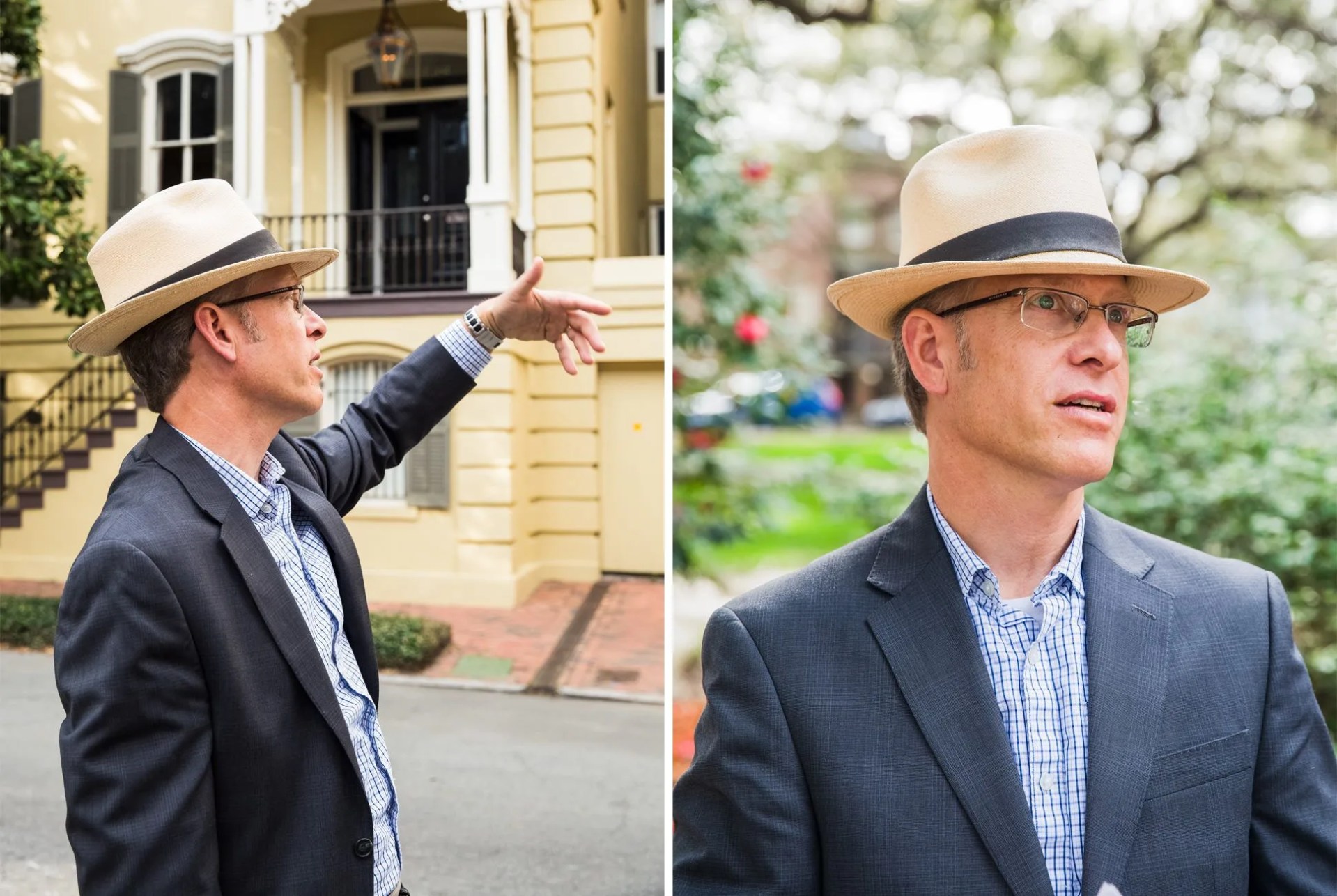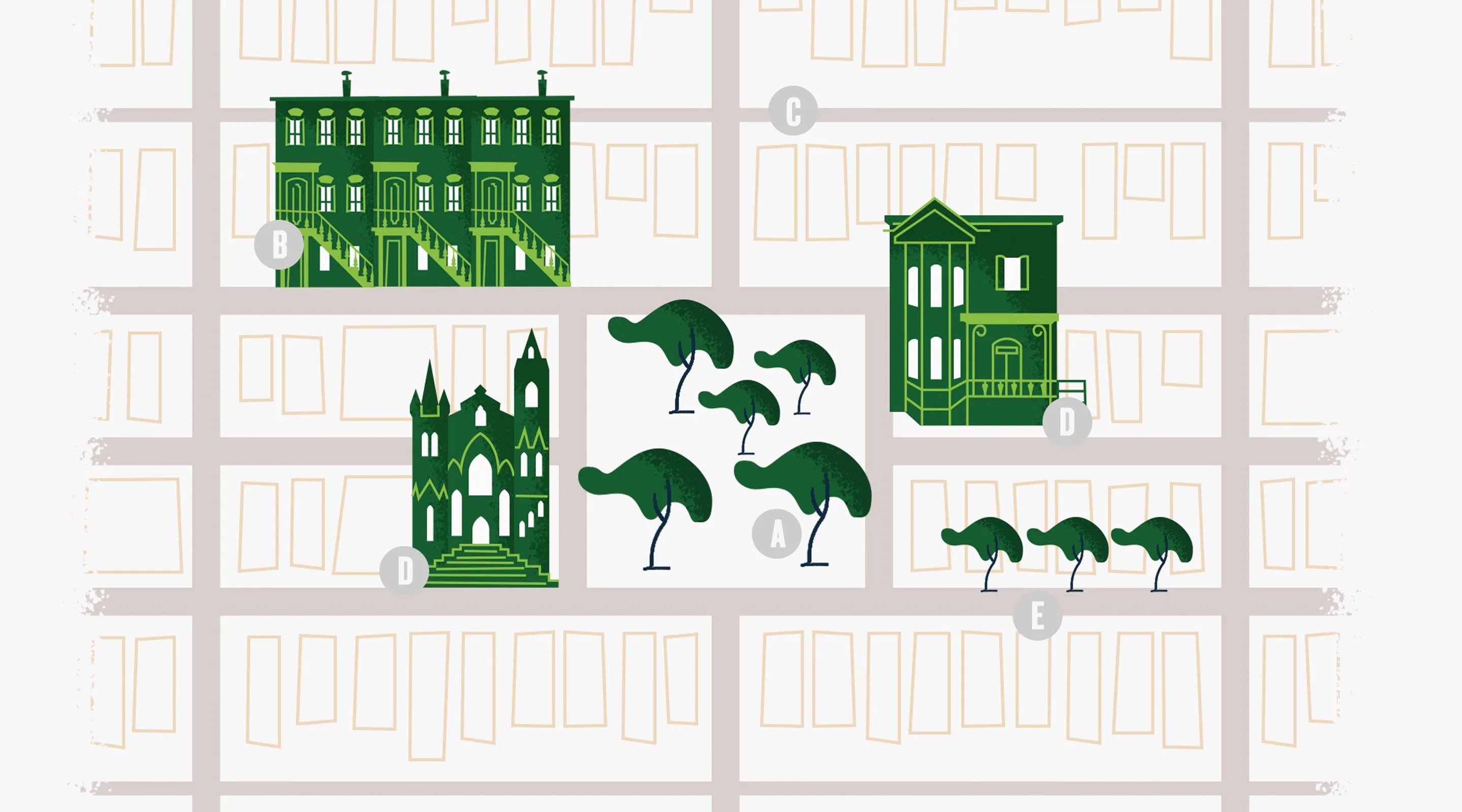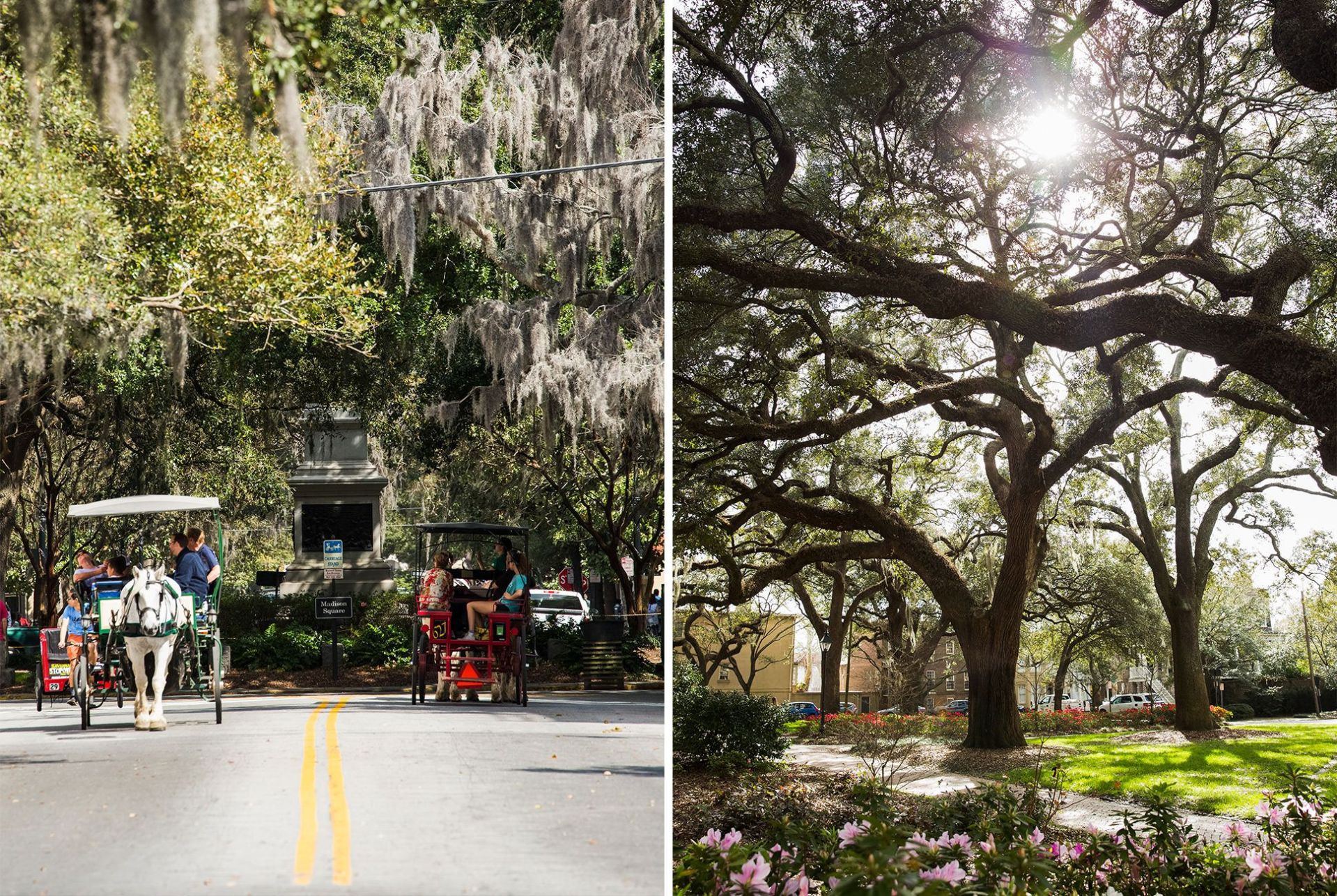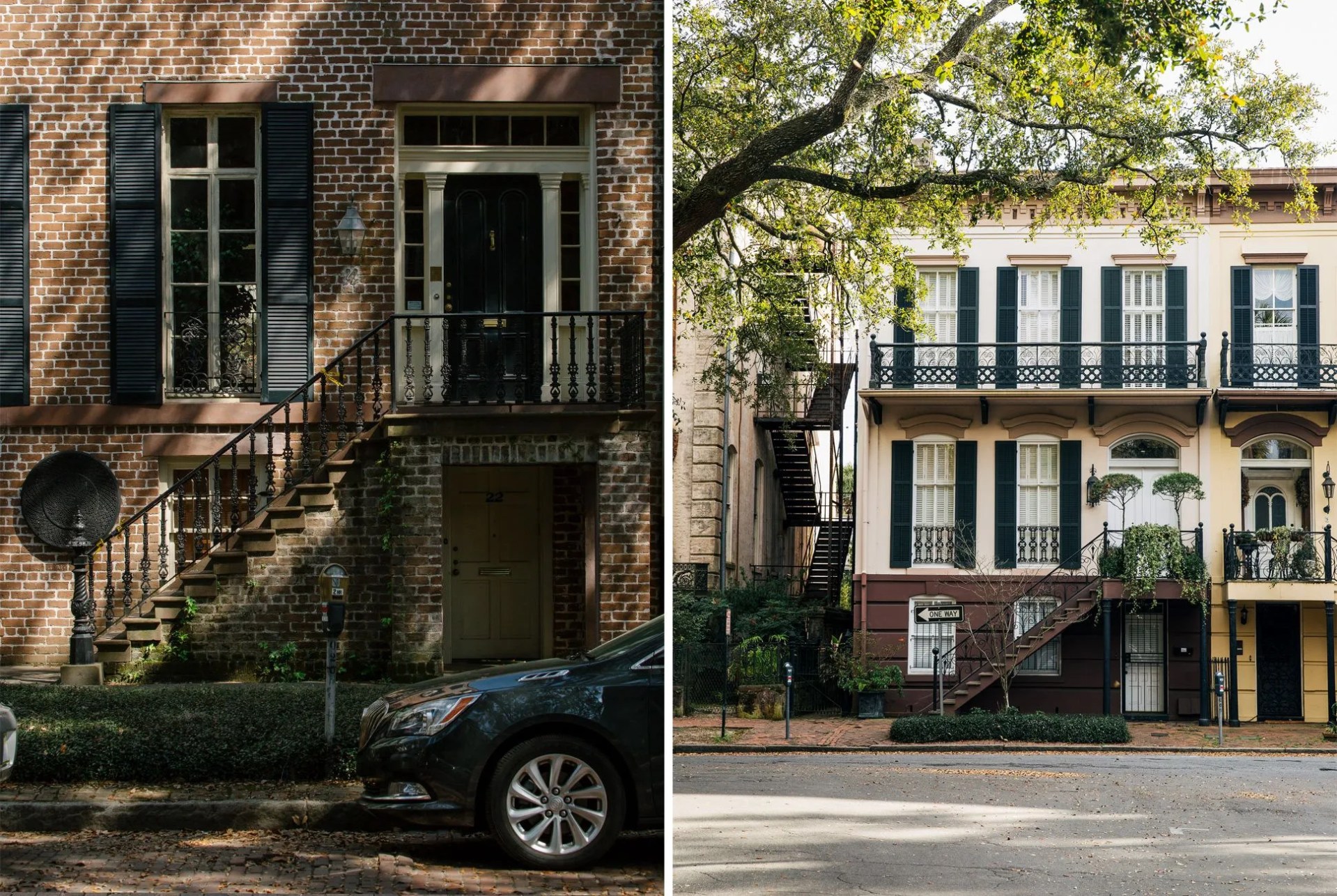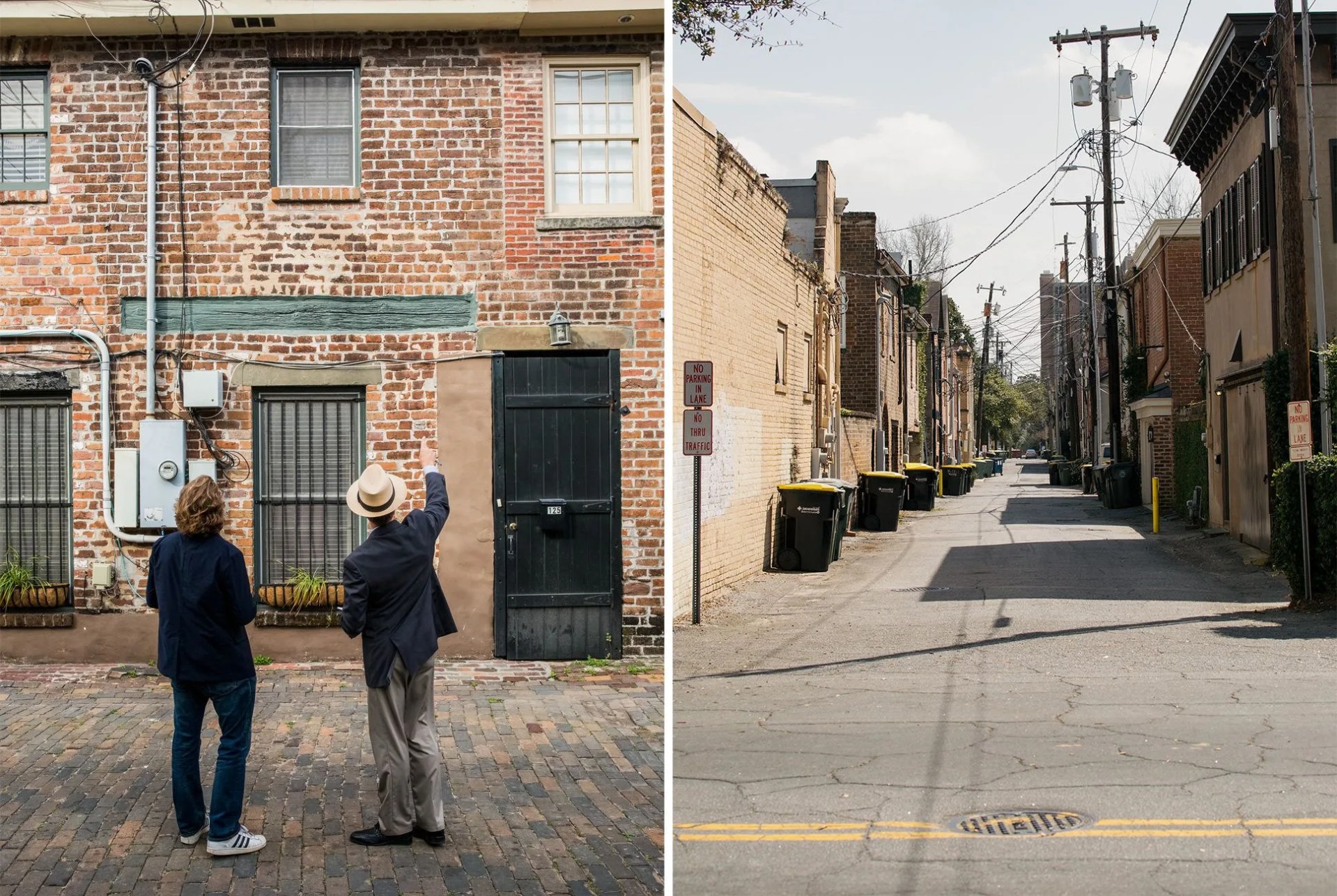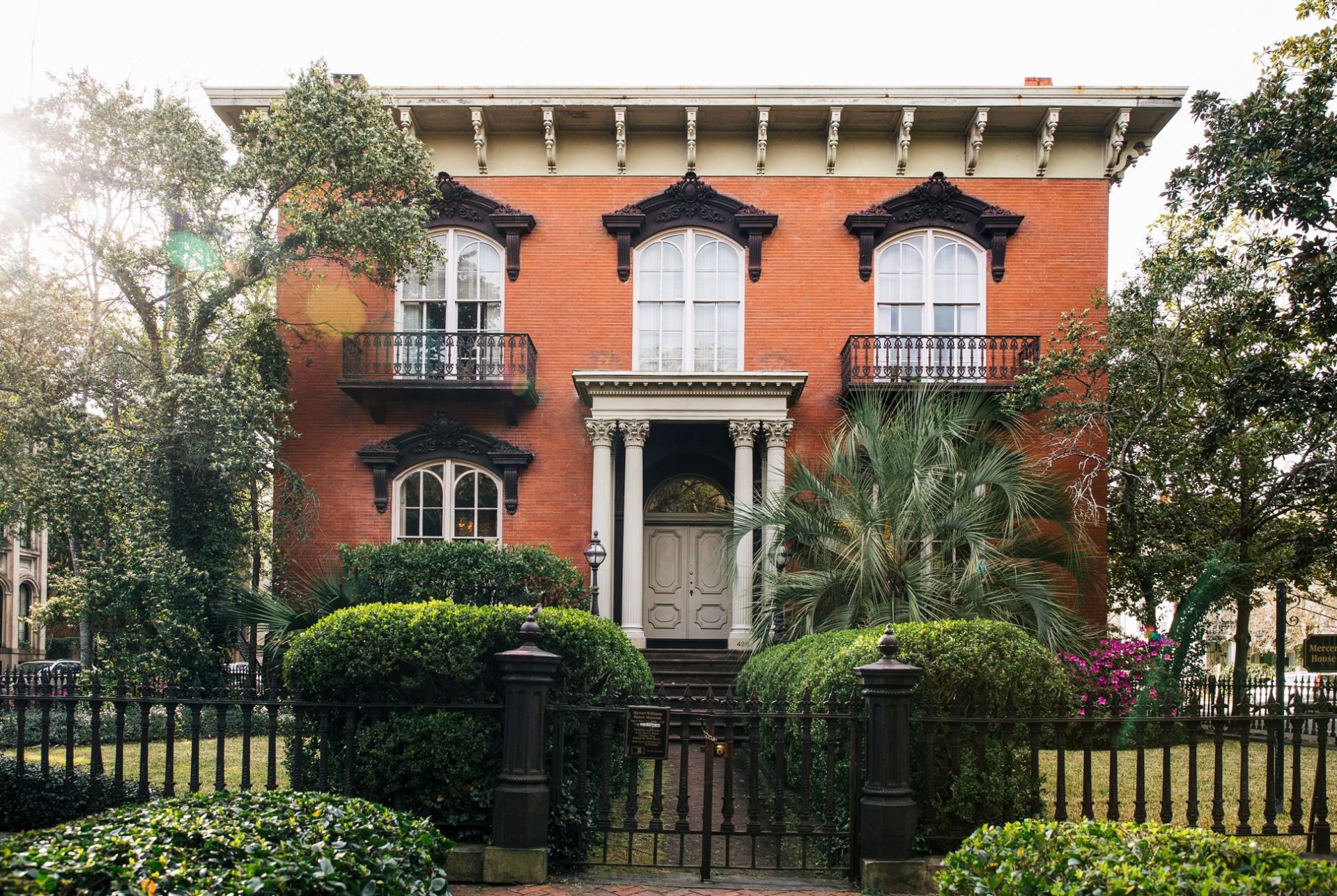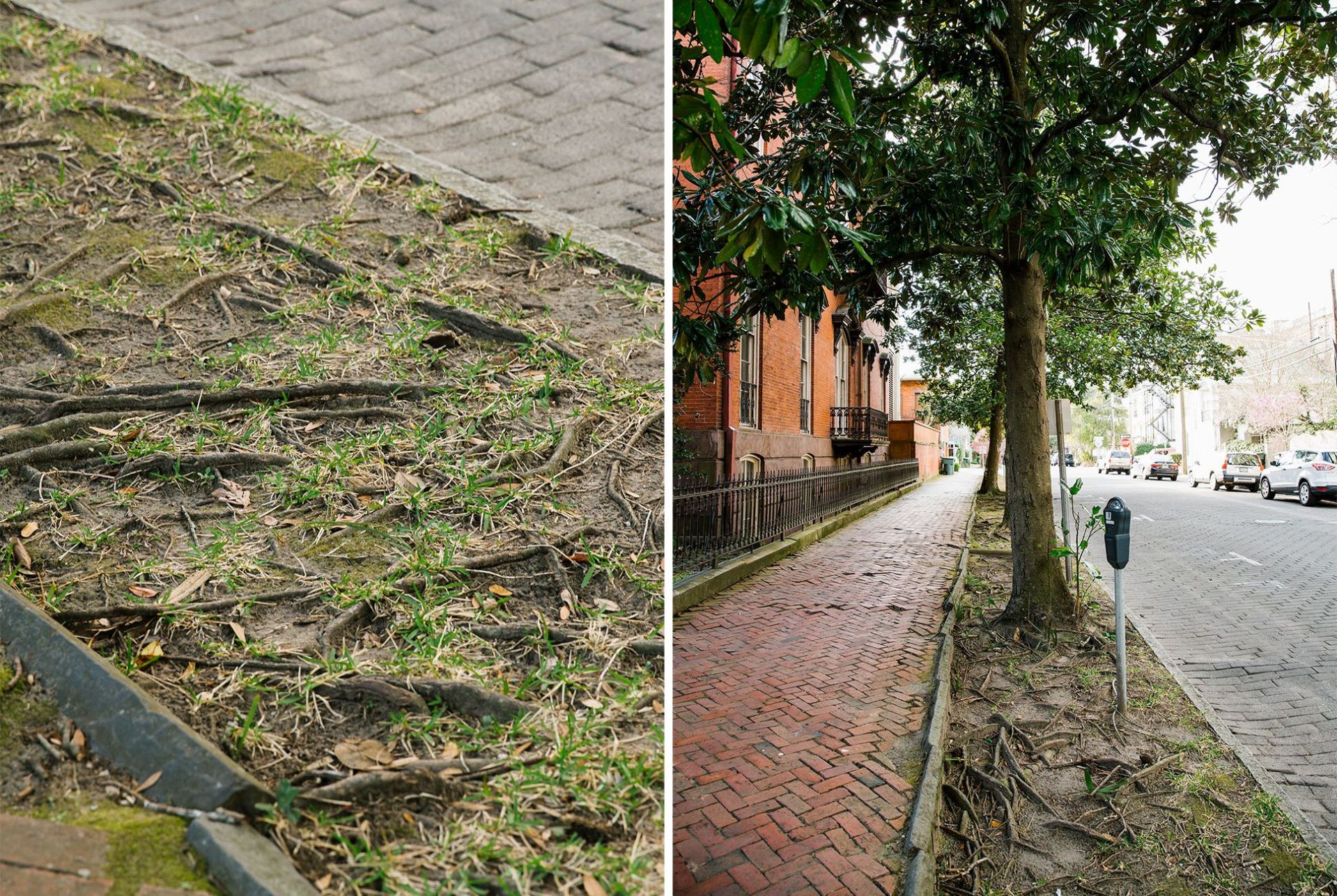Savannah is often called a haunted city, and if you walk the streets of its historic downtown, it won’t be long before the hairs on the back of your neck stand up and you pause, perplexed. But you won’t have seen a ghost; you’ll be standing in a square very much like the one you were just in, feeling a strong sense of déjà vu.
“There are twenty-two squares in downtown Savannah,” said Robin Williams, a professor of architecture at Savannah College of Art and Design. A Toronto native, he’s lived in the small city of 142,000 people for 23 years and has adapted quite well to the look of the Southern gentleman, complete with a straw hat. “If you’ve got keen eyes, you can look [down the road] and see not just the monument right there, but the monument beyond it, and the monument beyond it. Each square is equidistant, with only seven hundred feet or so between them. It’s very rhythmic.”
If this repeated rhythm makes Savannah’s beauty obvious over and over again, it has the city’s underlying blueprint to thank. Savannah has one of the most unusual layouts in the country, and the nation’s largest restored historic urban area. “It’s just like Manhattan, on a smaller scale,” Williams said. “It’s a rich, complex, built environment that has lots of layers and lots of intimate details.”
In 1733, Savannah’s founder, James Oglethorpe, created a settlement as a foothold in the no-man’s-land between the Carolinas to the north and Spanish Florida to the south. His plan blended the necessary military qualities — defensible, spread out in case of bombardment and equipped with spaces to house and train troops — with utopian elements based on equality and the prohibition of slavery, liquor and lawyers. Oglethorpe’s answer was six cookie-cutter neighborhood units called “wards,” each built around a central square, with four public building lots for churches and libraries and roughly eight sets of housing lots.
If that sounds particularly thoughtful of residents, it was. Oglethorpe saw Savannah as a place of opportunity for debtors and the religiously persecuted — a kind of inverse version of Australia, where prisoners were sent to a hellish penal environment. “Georgia was almost proto-Communist,” said Williams. “Each citizen in Savannah had a townhouse, but was a yeoman farmer who was expected to carry his weight for society.”
Oglethorpe’s utopian vision failed after 20 years or so, ruined by the rising tide of slavery (and to a lesser extent, lawyers and booze). But the town’s layout flourished. “The city evolved in the seventeenth century, but they kept this idea and kept replicating it, from the seventeenth century to the nineteenth century,” Williams said. “Like a family recipe that gets handed down through the generations.”
